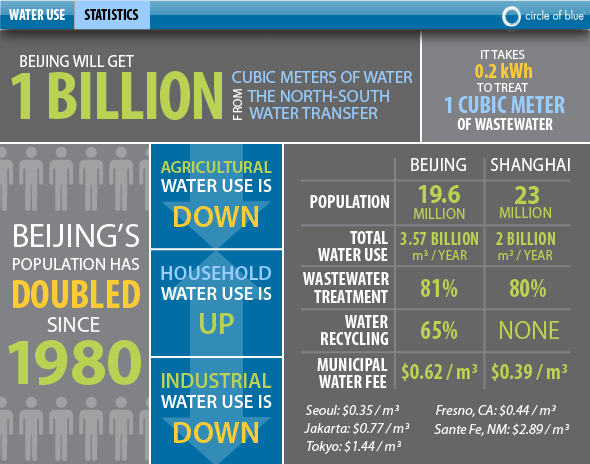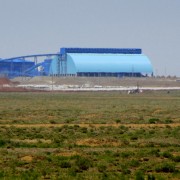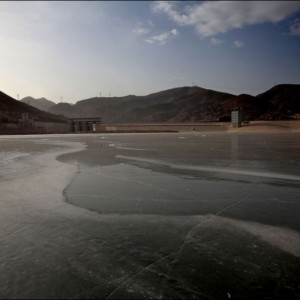Infographic: Beijing Water Use and Population Statistics
The population of China’s capital has doubled since 1980, and, though agricultural and industrial water use is down, municipal use is up.
Beijing is at the bull’s-eye of a potentially ruinous collision between accelerating growth and scarce freshwater reserves that is unfolding in China’s dry and resource-rich northern provinces. But the city’s municipal government is acting with authority to avoid a water crisis by relocating thirsty industries to the coast, regulating water prices, and cutting back on irrigated farmland.
*Prices in other Asian cities based on use of 15 cubic meters per month. Source: International Benchmarking Network for Water and Sanitation Utilities, 2010.
*Prices are representative of the least expensive and most expensive water rates in the 20 largest U.S. cities. Prices are based on use of 45 cubic meters per month; the average for a family of four. Source: Circle of Blue, 2011.
Graphic by Justin Manning and Stephanie Meredith, undergraduate students at Ball State University.
Made to accompany Off the Deep End — Beijing’s Water Demand Outpaces Supply Despite Conservation, Recycling, and Imports, an article by Nadya Ivanova. Ivanova—who has reported from China, Europe, and the United States—is a Chicago-based reporter and producer for Circle of Blue. Reach her at circleofblue.org/contact. Contributions by Jennifer Turner, Washington, D.C.-based director of the China Environment Forum at the Woodrow Wilson International Center for Scholars. Research assistance by Zifei Yang, research intern at the China Environment Forum.
Circle of Blue provides relevant, reliable, and actionable on-the-ground information about the world’s resource crises.









Leave a Reply
Want to join the discussion?Feel free to contribute!